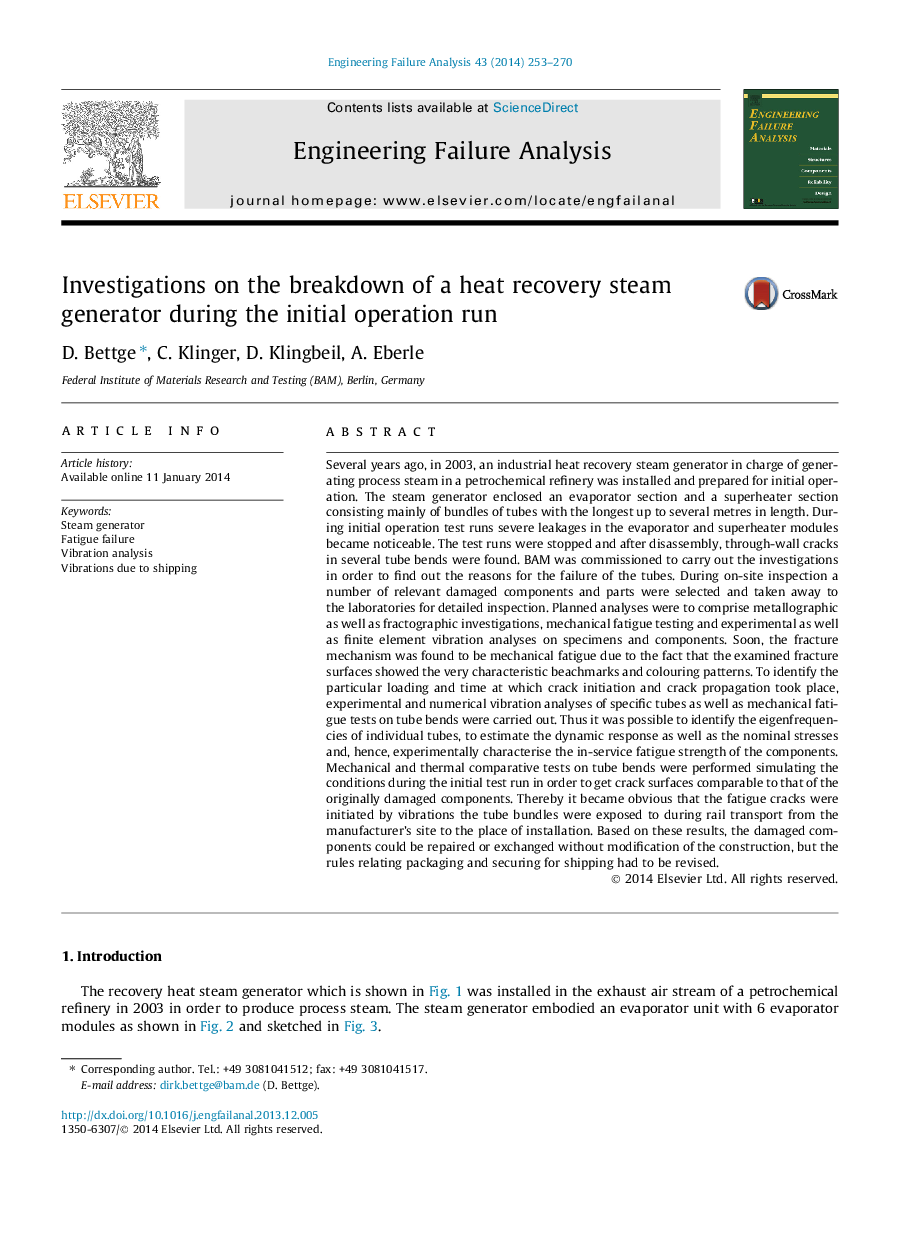| کد مقاله | کد نشریه | سال انتشار | مقاله انگلیسی | نسخه تمام متن |
|---|---|---|---|---|
| 773781 | 1462981 | 2014 | 18 صفحه PDF | دانلود رایگان |
• An industrial steam generator failed during initial test runs due to fatigue cracking.
• Fatigue crack surfaces showed characteristic beachmarks and colouring patterns.
• Experimental together with numerical vibration analyses on specimens and components gave better understanding of the dynamic response of the system.
• Laboratory tests of tube bends were carried out to simulate the vibrational conditions adequately, thus, providing the reconstruction of the history of in-service loading and failure root cause.
• The root cause of the failure was identified to be inappropriate transport.
Several years ago, in 2003, an industrial heat recovery steam generator in charge of generating process steam in a petrochemical refinery was installed and prepared for initial operation. The steam generator enclosed an evaporator section and a superheater section consisting mainly of bundles of tubes with the longest up to several metres in length. During initial operation test runs severe leakages in the evaporator and superheater modules became noticeable. The test runs were stopped and after disassembly, through-wall cracks in several tube bends were found. BAM was commissioned to carry out the investigations in order to find out the reasons for the failure of the tubes. During on-site inspection a number of relevant damaged components and parts were selected and taken away to the laboratories for detailed inspection. Planned analyses were to comprise metallographic as well as fractographic investigations, mechanical fatigue testing and experimental as well as finite element vibration analyses on specimens and components. Soon, the fracture mechanism was found to be mechanical fatigue due to the fact that the examined fracture surfaces showed the very characteristic beachmarks and colouring patterns. To identify the particular loading and time at which crack initiation and crack propagation took place, experimental and numerical vibration analyses of specific tubes as well as mechanical fatigue tests on tube bends were carried out. Thus it was possible to identify the eigenfrequencies of individual tubes, to estimate the dynamic response as well as the nominal stresses and, hence, experimentally characterise the in-service fatigue strength of the components. Mechanical and thermal comparative tests on tube bends were performed simulating the conditions during the initial test run in order to get crack surfaces comparable to that of the originally damaged components. Thereby it became obvious that the fatigue cracks were initiated by vibrations the tube bundles were exposed to during rail transport from the manufacturer’s site to the place of installation. Based on these results, the damaged components could be repaired or exchanged without modification of the construction, but the rules relating packaging and securing for shipping had to be revised.
Journal: Engineering Failure Analysis - Volume 43, August 2014, Pages 253–270
